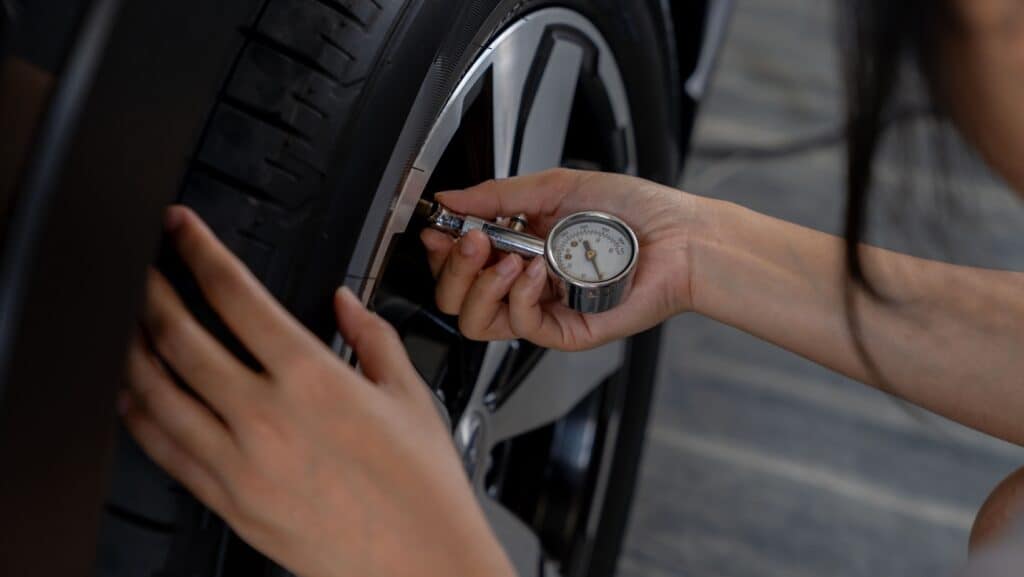How to Get Your Car Ready for Winter: 10 Tips for a Safe and Smooth Season
Winter brings a whole new set of challenges for car owners. From icy roads to frigid temperatures, preparing your car for the winter months is crucial to ensure your safety and the longevity of your vehicle. Let’s get your car ready for winter and avoid unnecessary breakdowns and accidents.
1. Check Your Tires

One of the most important steps in preparing your car for winter is making sure your tires are in good condition. In cold and icy weather, your tires are your first line of defense. Consider the following:
- Winter Tires: Regular all-season tires may not provide enough traction in icy or snowy conditions. Switching to winter tires can improve your car’s grip on the road, reducing the risk of sliding. Winter tires are designed with deeper treads and special rubber compounds that stay pliable in cold temperatures.
- Tire Pressure: Cold temperatures cause air to contract, so your tire pressure will drop as the weather cools. Low tire pressure reduces traction, especially on icy roads. Make it a habit to check your tire pressure regularly during the winter months. Your car’s manual will have the recommended PSI (pounds per square inch) for your tires.
- Tread Depth: Worn-out tires with little to no tread won’t provide enough traction on wet or icy roads. Check the tread depth with a coin; if the tread is too shallow, it’s time to replace your tires.
2. Test Your Battery

Car batteries take a beating in cold weather. The chemical reactions inside the battery slow down in low temperatures, which can reduce its effectiveness. Before winter hits, take the following steps to ensure your battery is up to the task:
- Battery Health Check: If your car battery is over three years old, have it tested at an auto shop to ensure it still holds a charge. Many shops will do this test for free or for a small fee.
- Clean Connections: Make sure the battery terminals are clean and free of corrosion. Corrosion on the terminals can prevent proper electrical flow, making it harder to start your car in cold weather.
- Charge It Up: If your battery is weak but still functional, consider investing in a trickle charger or battery tender. This device can keep your battery charged when your car isn’t in use, especially during long cold spells.
3. Inspect Your Cooling System and Antifreeze

Your car’s cooling system does more than just keep your engine cool—it also helps prevent the engine from freezing in cold weather. Ensuring your cooling system is functioning properly is key to winter car prep:
- Check Antifreeze Levels: Antifreeze, or coolant, is critical for maintaining the right engine temperature during the winter. Make sure the coolant is topped off and that it’s the correct mixture. The general recommendation is a 50/50 mix of antifreeze and water, but check your car’s manual for the manufacturer’s specifications.
- Inspect Hoses and Belts: Cold temperatures can cause rubber components to become brittle. Check all hoses and belts for cracks or signs of wear, as they are more likely to fail in cold conditions.
4. Check Your Heating and Defrosting Systems

There’s nothing worse than a freezing car with fogged-up windows. Ensure your heating system and defrosters are in good working order:
- Heater: Test your car’s heating system to ensure it’s blowing warm air. A malfunctioning heater not only makes for an uncomfortable ride but can also be a safety hazard if you’re unable to defrost your windows properly.
- Defrosters: Both front and rear defrosters are essential for maintaining visibility. Ensure they are working properly and clear your windows of fog and ice effectively.
5. Replace Wiper Blades and Top Up Washer Fluid

Your windshield wipers and washer fluid play a huge role in keeping your visibility clear during winter storms. Make sure they are in optimal condition:
- Winter Wiper Blades: Winter-specific wiper blades are designed to handle snow and ice buildup. Consider swapping out your regular blades for winter blades, which have a rubber covering to prevent ice from forming on the blades.
- Washer Fluid: Regular washer fluid can freeze in low temperatures. Switch to winter-grade washer fluid that has a lower freezing point to ensure it flows when you need it most. Keep an extra bottle in your trunk in case you run out during a storm.
6. Check Your Lights

Winter days are shorter, and you’re more likely to drive in low-light or foggy conditions. Make sure your lights are in working order to maximize visibility and safety:
- Headlights and Taillights: Test all your lights, including headlights, brake lights, and turn signals. Replace any bulbs that are dim or burnt out.
- Fog Lights: If your car has fog lights, ensure they are working properly. These lights can help you see better in snowy or foggy conditions.
- Keep Lights Clean: Dirt and snow can accumulate on your lights, reducing their effectiveness. Clean your lights regularly to ensure maximum visibility.
7. Stock Up on Winter Emergency Supplies

Even if you’ve prepared your car thoroughly, it’s wise to be ready for emergencies. Keep a winter emergency kit in your car that includes:
- Ice Scraper and Snow Brush: An ice scraper is essential for clearing your windshield, and a snow brush will help you remove snow from the roof and hood.
- Jumper Cables: Cold weather can sap your battery’s power, so having jumper cables on hand can save you from being stranded.
- Blanket and Warm Clothes: In case you get stuck in a snowstorm or break down, keep a blanket, gloves, and extra warm clothes in your car to stay warm until help arrives.
- Non-perishable Food and Water: A few energy bars and bottled water can help you stay comfortable if you’re stuck for an extended period.
- Shovel and Traction Material: A small shovel can help dig your car out if it gets stuck in snow. Keeping some sand, cat litter, or even a traction mat in your trunk can also help your tires gain traction on icy or snowy surfaces.
8. Consider Snow Chains or Traction Devices

If you live in an area with frequent heavy snowfalls, snow chains or traction devices might be worth investing in. These can provide extra grip in severe conditions, though they should only be used on snow-covered roads.
9. Get a Winter Car Inspection

If you’re not confident in doing all these checks yourself, consider taking your car to a mechanic for a full winter inspection. They’ll make sure all essential systems are ready for winter driving.
10. Drive Safely

Finally, no matter how prepared your car is, your driving habits are crucial in winter. Slow down, increase your following distance, and avoid sudden braking or sharp turns in snowy or icy conditions.
Conclusion

Preparing your car for winter is about more than just safety—it’s about peace of mind. By following these steps, you can reduce the risk of breakdowns, improve your car’s performance in cold weather, and ensure you and your passengers stay safe throughout the season. Stay proactive, and your car will be ready to face winter’s challenges head-on.
7 Steps To Storing Tender Bulbs and Rhizomes Over Winter

Tender bulbs and rhizomes, like dahlias, cannas, and begonias, add vibrant colors and unique textures to gardens during the warm months. However, these plants cannot survive cold winters in most regions, as they are not frost-hardy. To enjoy their beauty year after year, proper storage during the colder months is essential. This guide will walk you through the steps of storing tender bulbs and rhizomes over winter, ensuring they remain healthy and ready for replanting come spring.
READ: 7 Steps To Storing Tender Bulbs and Rhizomes Over Winter
Join Us

Join us on this empowering journey as we explore, celebrate, and elevate “her story.” The Queen Zone is not just a platform; it’s a community where women from all walks of life can come together, share their experiences, and inspire one another. Welcome to a space where the female experience takes center stage. Sign up for our newsletter so you don’t miss a thing, Queen!





